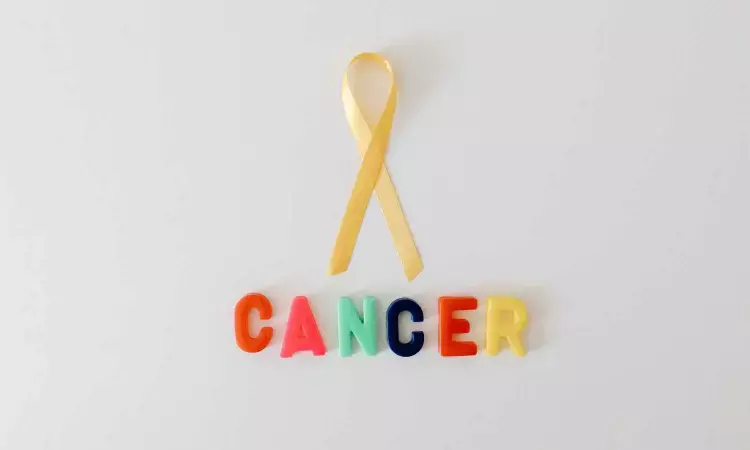- Home
- Medical news & Guidelines
- Anesthesiology
- Cardiology and CTVS
- Critical Care
- Dentistry
- Dermatology
- Diabetes and Endocrinology
- ENT
- Gastroenterology
- Medicine
- Nephrology
- Neurology
- Obstretics-Gynaecology
- Oncology
- Ophthalmology
- Orthopaedics
- Pediatrics-Neonatology
- Psychiatry
- Pulmonology
- Radiology
- Surgery
- Urology
- Laboratory Medicine
- Diet
- Nursing
- Paramedical
- Physiotherapy
- Health news
- Fact Check
- Bone Health Fact Check
- Brain Health Fact Check
- Cancer Related Fact Check
- Child Care Fact Check
- Dental and oral health fact check
- Diabetes and metabolic health fact check
- Diet and Nutrition Fact Check
- Eye and ENT Care Fact Check
- Fitness fact check
- Gut health fact check
- Heart health fact check
- Kidney health fact check
- Medical education fact check
- Men's health fact check
- Respiratory fact check
- Skin and hair care fact check
- Vaccine and Immunization fact check
- Women's health fact check
- AYUSH
- State News
- Andaman and Nicobar Islands
- Andhra Pradesh
- Arunachal Pradesh
- Assam
- Bihar
- Chandigarh
- Chattisgarh
- Dadra and Nagar Haveli
- Daman and Diu
- Delhi
- Goa
- Gujarat
- Haryana
- Himachal Pradesh
- Jammu & Kashmir
- Jharkhand
- Karnataka
- Kerala
- Ladakh
- Lakshadweep
- Madhya Pradesh
- Maharashtra
- Manipur
- Meghalaya
- Mizoram
- Nagaland
- Odisha
- Puducherry
- Punjab
- Rajasthan
- Sikkim
- Tamil Nadu
- Telangana
- Tripura
- Uttar Pradesh
- Uttrakhand
- West Bengal
- Medical Education
- Industry
Majority of cancer patients opt complementary therapies for treatment

Patients and oncologists are supportive of complementary therapies, such as nutrition counseling, exercise, massage, and mediation, for cancer treatment, according to a new survey conducted on behalf of the Healing Works Foundation. However, a disconnect exists between this growing interest and oncologists’ perceptions of patient support. One-third of oncologists said their patients lack interest in these therapies, but only 13% of cancer patients cite lack of interest when asked about barriers.
“Navigating a cancer diagnosis is about treating the whole person, not just the disease,” said Wayne Jonas, MD, President of Healing Works, a non-profit dedicated to the integration of healing and curing in routine health care delivery. “Oncologists are the single most influential factor in patient treatment decisions, and doctors must be educating themselves to help drive patient outcomes and treatment satisfaction. They need to understand that patients increasingly want to hear directly about all possible support during and after treatment of the cancer.”
More than 60% of cancer patients strongly believe in complementary therapies, and 71% want their health systems to offer them, according to the survey of more than 1,000 patients and 150 oncologists conducted in June and July. In fact, 55% of patients would have chosen a health system with more complementary therapies if they could go back in time, up substantially from 40% a year ago.
Among oncologists, most (57%) believe that complementary therapies are effective at managing the side effects of treatments, while a third (33%) indicate that they improve overall survival.
Yet, when asked about usage, perceptions differed. Sixty-four percent of cancer patients report using at least one complementary therapy, yet most of them never informed their oncologists. As a result, oncologists think only 40% of patients use one of these approaches.
“A communication gap-not an interest gap-appears to be one of the biggest barriers between patients and oncologists when exploring complementary options to support overall treatment,” said Jonas. “Clinicians need to be proactive and talk to their patients about evidence-based integrative health options early in the process, before patients go exploring on their own, and possibly getting into trouble.”
Patients also noted additional barriers to adoption, including the need for education about the benefits, reimbursement or other funding help, and a lack of guidance from their oncologist. Oncologists agree that insurance reimbursement is a major barrier, but also report that health systems do not have enough physical therapists, psychologists, and pain specialists to offer these therapies.
Patient usage of complementary therapies also varied among demographic groups:
- Hispanic (92%) and African American (83%) patients report the highest usage of complementary therapies and are interested in learning more about them.
- Seventy percent of female patients support the use of complementary therapies, while actual usage is nearly equal between men (62%) and women (66%).
- Younger patients (ages 18-50) are more likely to use a range of complementary therapies, especially mental health support/therapy, nutrition counseling and meditation or mindfulness.
Dr Kamal Kant Kohli-MBBS, DTCD- a chest specialist with more than 30 years of practice and a flair for writing clinical articles, Dr Kamal Kant Kohli joined Medical Dialogues as a Chief Editor of Medical News. Besides writing articles, as an editor, he proofreads and verifies all the medical content published on Medical Dialogues including those coming from journals, studies,medical conferences,guidelines etc. Email: drkohli@medicaldialogues.in. Contact no. 011-43720751


